Batting average .267 Role Baseball player Home runs 354 Date drafted 1986 | Runs batted in 1,244 Spouse Terrye May Name Lee May Siblings Carlos May | |
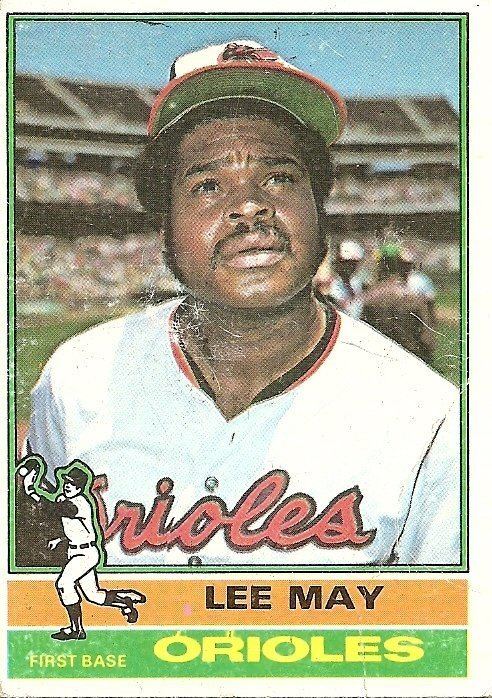 | ||
Similar People | ||
Arthur lee may the crowns love me always
Lee Andrew May (March 23, 1943 – July 29, 2017) was an American Major League Baseball (MLB) first baseman and designated hitter who played 18-seasons for the Cincinnati Reds (1965–71), Houston Astros (1972–74), Baltimore Orioles (1975–80), and Kansas City Royals (1981–82). He batted and threw right-handed. He was the older brother of former Chicago White Sox and New York Yankees outfielder Carlos May.
Contents
- Arthur lee may the crowns love me always
- Lee may
- High school
- Minor league
- Cincinnati Reds 196571
- Houston Astros 197274
- Baltimore Orioles 197580
- Kansas City Royals 198182
- Overall career
- Family
- References
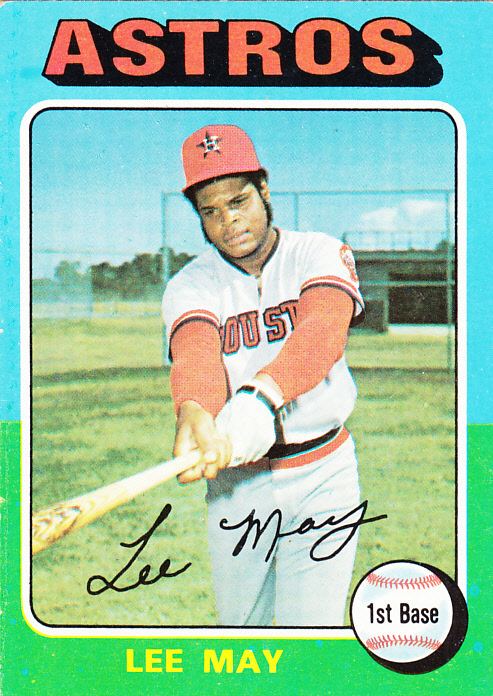
May, nicknamed "The Big Bopper", hit 20 or more home runs and 80 or more runs batted in (RBI), in 11 consecutive seasons. He led the American League (AL) in RBI in 1976. He also made three All-Star Game appearances including as the starting first baseman for the National League (NL) team in 1972.
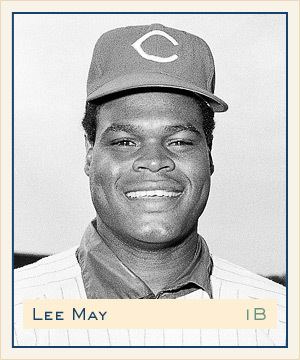
Lee may
High school
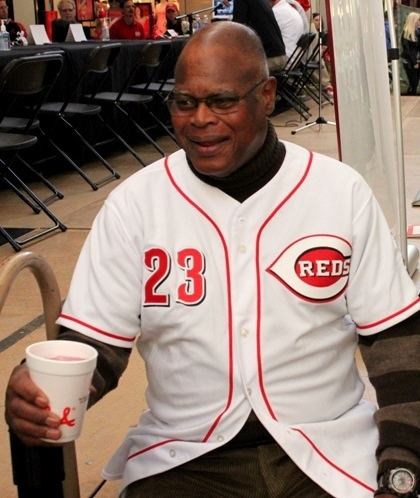
May was a standout in both baseball and football at A.H. Parker High School in Birmingham. A fullback on the varsity football team, May was offered a scholarship at the University of Nebraska. But the Cincinnati Reds organization were also interested in him and signed May to a contract with a $12,000 bonus on June 1, 1961 as an amateur free agent.
Minor league

May began his professional career in 1961 with the Tampa Tarpons in the Florida State League, a D-league affiliate of the Reds. He played two years in Tampa before moving up to the Rocky Mount Leafs in the Class A Carolina League. The following year he was again promoted, this time to the Macon Peaches in the Class AA Southern League. At all three stops, May, like many black players, endured racist taunts not only from an opposing team's white fans but from the fans of his own team as well. May hated his time in Macon, Georgia the most. Not only did he hear racist epithets, but he also had to avoid thrown bottles. Fortunately, May's emergence in 1964, allowed him to be promoted the following year to the San Diego Padres, who were then in the Class AAA Pacific Coast League. During his only season with the Padres, May was one of the best players in the league. He hit 34 home runs while driving in 103 runs and hitting .321. He was called up briefly to the Reds at the end of season but then moved to the Reds new Class AAA International League team, the Buffalo Bisons in 1966. A solid AAA season at Buffalo led to his permanent major league promotion.
Cincinnati Reds 1965–71

May made his major league debut on September 1, 1965. He came in as a pinch hitter against the Milwaukee Braves. On September 24, 1966 at Crosley Field in Cincinnati, he hit his first major league home run against Bob Shaw of the New York Mets. It turned out to be the game-winning homer. May broke camp as a full-time member of the Reds in 1967. That season, May was named NL Rookie of the Year by The Sporting News. He was also named to the Topps All-Star rookie team. The next two years saw much of the construction of the future The Big Red Machine. Along with Johnny Bench, Tony Pérez, and Pete Rose, May helped power arguably one of baseball's great offenses. In 1968, he hit 22 home runs and drove in 80 runs. Despite only walking 38 times and striking out 100 times, he still had an OPS of .805 which was remarkable during the Year of the Pitcher.

In 1969, he finished the year with 38 home runs, 3rd in the National League. He also had 110 RBIs which was 4th in the league. May was also 2nd in extra base hits, 4th in total bases, 6th in slugging percentage and 6th in doubles. Also in 1969, May had three consecutive multi-home run games, a feat that has only happened three other times in major league history.
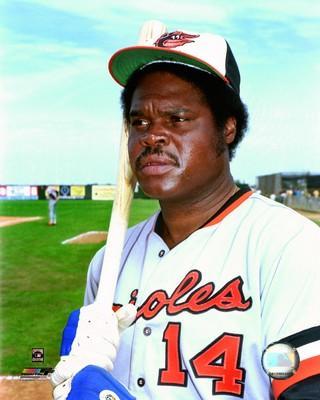
Teammate Tommy Helms nicknamed May "The Big Bopper from Birmingham" which later was shortened to "The Big Bopper." During his time in Cincinnati, May was one of the clubhouse leaders for the Reds. With his pragmatic personality and comic sense of timing, manager Sparky Anderson often called on May to put out clubhouse fires.

In 1970, the Reds pounded nearly everyone into submission. Batting in the fifth slot, May delivered 94 runs batted in. On June 24, 1970, May hit the last home run in the history of Crosley Field during the park's final game. The game-winning shot came in the eighth inning off San Francisco Giants pitcher Juan Marichal.
May was the only member of The Big Red Machine to produce in the 1970 World Series against the Baltimore Orioles. Pete Rose batted .250, MVP winner Johnny Bench hit .211, and Tony Pérez slumped to .056. May, on the other hand, batted .389 with two home runs and eight RBI (a World Series record for a five-game series at the time) . In game four, the Orioles were leading 5-3 in the 8th inning and looking to sweep the series. The Reds had two baserunners on when May came to the plate against Eddie Watt. May hit a ball into the left field bleachers at Memorial Stadium (Baltimore) to lead the Reds to their one and only victory of the series.
Although the Reds slumped in 1971, May continued to slug away, hitting 39 home runs (3rd in the NL) and driving in 98 RBIs (6th in NL). Consequently, May was named the Reds MVP for the 1971 season.
Houston Astros 1972–74
With the Reds needing to shore up their infield defense and add speed on the basepaths and seeing Tony Pérez and May as essentially the same type of player (right-handed power hitters), the Reds sent May to the Houston Astros for future Hall of Famer Joe Morgan. The Astros, badly in need of power after finishing last in the NL in home runs in 1971, completed a trade with the Reds on November 29, 1971 that sent second baseman Morgan, pitcher Jack Billingham, infielder Denis Menke, outfielder César Gerónimo and minor leaguer Ed Armbrister for May, second baseman Tommy Helms and utility man Jimmy Stewart.
May brought much-needed power to the Astro line-up. Although his power numbers dropped in the Astrodome, the toughest ballpark to hit a home run in the National League, he continued to drive in runs on a regular basis. His 105 RBI in 1973 was second in the league. During the 1973 season, May set an Astro club record with a 21-game hitting streak. It was during this streak he hit three home runs in one game (also a club record) and collected his 1000th base hit. On April 29, 1974, May became the 17th player in MLB history to hit two home runs in one inning.
Baltimore Orioles 1975–80
He was traded along with Jay Schlueter to the Baltimore Orioles for Enos Cabell and Rob Andrews on December 3, 1974. Averaging 32 homers and 98 RBI as one of MLB's top five power hitters over the previous five seasons, May was expected to improve the Orioles' offensive production at first base.
He took an immediate liking to the American League. In his first at bat in the junior circuit, he hit a three-run home run at Tiger Stadium. In his first appearance at Boston's Fenway Park, May crushed two three-run home runs over the park's famed Green Monster including a game-winning shot.
In 1976, May enjoyed his best season as an Oriole. He hit 25 home runs and led the American League in RBI with 109. For his effort, May won the Louis M. Hatter Most Valuable Oriole Award.
In his last three seasons with the Orioles, May was primarily used as a designated hitter to make room for a young Eddie Murray at first base. Although May was a major contributor in 1979 with 19 homers and 69 RBI, in the 1979 World Series, he only came to bat twice because the DH was not used in that series.
Kansas City Royals 1981–82
After being allowed to leave the Orioles via free agency after the 1980 season, May signed with the Royals as part-time 1B/DH/pinch hitter. Despite hitting .308 in only 48 games in 1982, the 39-year-old May was released by the team in November and he decided to call it a career.
Following his release from the Royals, he was hired back as the team's hitting coach and earned a World Series ring as part of the 1985 World Series championship team.
Overall career
In his 18-season career, May posted a .267 batting average, with 354 home runs, 1244 runs batted in, and 2031 hits in 2071 games. May was prone to strike out; 10 times he fanned more than 100 times in a season and compiled 1,570 in his career. However, he is one of 11 major leaguers to reach the 100-RBI plateau playing for three teams, the others being Dick Allen, Joe Carter, Orlando Cepeda, Rocky Colavito, Goose Goslin, Rogers Hornsby, Reggie Jackson, Al Simmons, Vic Wertz, and Alex Rodriguez.
May is currently in three different Halls of Fame: Baltimore Orioles Hall of Fame (1988), Cincinnati Reds Hall of Fame (2006), Alabama Sports Hall of Fame (2009).
Family
Lee May and his wife, Terrye, have three children and nine grandchildren. His son, Lee May Jr., was a New York Mets first-round pick in 1986 and played from 1986 through 1993 in their Minor League system. After that, he began his coaching career in the Mets organization in 1999 and later worked as the minor league hitting coordinator for the Seattle Mariners from 2012–2015. He previously served as a manager and coach in the Cleveland Indians system for seven seasons beginning in 2004, and then joined the Boston Red Sox organization in 2016, serving as the hitting coach for the Greenville Drive. May Jr.'s son, Jacob May, played baseball at Coastal Carolina University, and was selected by the Chicago White Sox in the third round (91st overall) of the 2013 MLB Draft.
